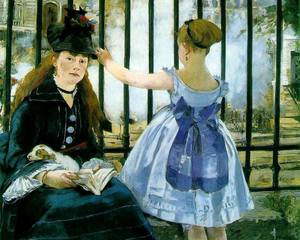“You’ve created a Frankenstein’s monster!”
Any time we hear this phrase we recognize it as code for someone having produced a force that has taken on a destructive life of its own. (The current quagmire in Iraq immediately springs to mind. Of course, Dr. Frankenstein was a genius; Bush not so much). In many ways, prejudice is a force equitable to being a Frankenstein’s monster; it is a monster that is created out of fear. Prejudice is usually defined as an opinion formed without knowledge, but in fact prejudice is usually forged from fear of misunderstood knowledge. Prejudice comes about not because of the fear of the unknown, but rather of a misperception of how the unknown will affect an individual or society. Mary Shelley’s novel Frankenstein can be read as a tragedy in which the disastrous events that take place spring from the prejudice that is borne from the fear of the unknown as personified by the Creature.
Psychologically speaking, the Creature is a manifestation of the Other, and the rejection of the Creature by Frankenstein and the additional characters is an example of how the fear of difference works to instill prejudice against those who don’t reflect the accepted norm. Otherness as a psychological term really means the same thing as abnormal; more specifically it the representation of an abnormality that can be viewed as potentially threatening the very social fabric. Any time the threat of the Other arises, the prevailing ideological power structure responds in one of two ways. Either the threat is rejected outright and destroyed, or its threatening components are diluted until it is rendered safe enough to be absorbed into the mainsteam and become a reasonable replica of society.
No matter which method is used, the first step always requires that the threat be distanced through language. Disparaging terms, epithets, pejorative descriptions of that which threatens normality is the historic stepping stone toward destruction or assimilation. When Frankenstein describes his creation as “‘Abhorred monster! fiend that thou art! the tortures of hell are too mild a vengeance for thy crimes. Wretched devil!” he is merely a following the methodology of distancing that includes such words as “kike,” “spic” and “nigger.” The Creature is a threat that must be belittled, made inhuman, and undeserving of respect.
However, it is not only the Creature’s hideous appearance, so different from the norm, that inculcates fear and prejudice in its creator and those with whom he comes in contact. Ugliness, of course, is belittled with cruel epithets every day, but something more is at work to turn the Creature from a monster to a devil. The Creature’s horrific appearance already distances himself from the norm, but his threat to society springs more from the deviant method of his creation. Alternative methods of reproduction are viewed with suspicion and fear by many people, spanning the complete range of religious beliefs. Even today, the fear and suspicion aroused by cloning humans has led to a prejudice against it without there yet being any actual cloned creation to be prejudiced against.
It is, therefore, not surprising at all that the Creature is feared and hated not only because of his appearance, but because his appearance is linked to his unnatural process of creation. The Creature was formed through science only; there are no aspects of the supernatural or the occult in the process of his production. Science was then and is now viewed with suspicion and fear by many people. The fear is that science will somehow manage to outdo nature, to create something greater and stronger and therefore more threatening, and this fear and prejudice is expressed in the novel by even Frankenstein himself: “I suddenly beheld the figure of a man, at some distance, advancing towards me with superhuman speed. He bounded over the crevices in the ice, among which I had walked with caution; his stature, also, as he approached, seemed to exceed that of man.” The prejudice that arises from this fear has not be relegated to science, of course. It has been expressed in natural creations through the sick, sad enslavement of entire races; races that have been stripped of freedom and dignity due in no small part to the fear of their physical or intellectual superiority.
Part of the process of annihilation or assimilation, therefore, lies in creating a sense of inferiority in the Other itself, and Frankenstein along with everyone else with whom the Creature comes into contact succeeds in accomplishing that. The Creature may very well be both physically and intellectually superior to most humans, yet he can only conclude he is inferior when he compares himself to the rest of society: “I had never yet seen a being resembling me, or who claimed any intercourse with me. What was I?” This is the ultimate power of prejudice in its attempt to assimilate the Other. By undermining the strength of the threat and creating in it the desire to conform to accepted norms, prejudice can serve to eliminate the need for destruction. Should the Other refuse assimilation or should the prevailing power decide it does not desire assimilation, then the only recourse is annihilation. Frankenstein’s prejudice against his creation is so great and overpowering that he chooses the latter.
In modern society, when the decision is made to not destroy the Other, it is allowed to operate simultaneously within and outside the dominant culture by fencing it in until assimilation reaches a certain point, i.e., Little Italy, Chinatown and African-American ghettos. Despite heartfelt entreaties by the Creature, Frankenstein chooses to destroy the threat rather than even let it live in this way. In fact, he literally chases it to the ends of the earth in his demented mission to destroy it.
Prejudice is not an emotion in itself, it is an offshoot of fear. To paraphrase a great philosopher of our time: “Fear leads to prejudice. Prejudice leads to hate. Hate leads to suffering.” Shelley’s novel is an excellent example of how the fear of a threatening Other leads to a choice between destroying that which is perceived as different, or assimilating it into the mainstream by diluting its power. Prejudice is the real Frankenstein’s monster.



